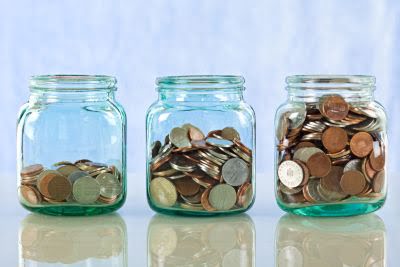Section 12: Discussions on retirement investing & EPF.
Elaboration of Section 12
This section presents a practical, real-world discussion among the group members, centered on a crucial question for Malaysian retirees: What should I do with my EPF (Employees Provident Fund) savings upon reaching the withdrawal age? The conversation moves from a simple question to a nuanced analysis, applying the principles discussed in earlier sections.
1. The Core Dilemma: To Withdraw or Not to Withdraw?
The discussion is triggered by a member asking whether it's wise to leave his EPF savings in the fund to continue earning its historically higher dividends (5-6%) compared to the "paltry interest" from Fixed Deposits (FDs).
2. The Key Factors in the Decision
The responses highlight that there is no one-size-fits-all answer. The decision must be based on a personal assessment, echoing the themes of Section 2 (Knowing Yourself):
Financial Situation & Objectives: The first response correctly states that the answer depends entirely on the individual's financial picture, including other assets, debts, and income needs.
Risk and Return Analysis:
EPF's Allure: EPF is presented as a virtually risk-free investment that has consistently delivered returns (~5-6%) significantly higher than FDs (~3.5%). The power of compounding this small percentage difference over many years is substantial.
The Justification for Withdrawal: The key insight is that if you withdraw from EPF to invest in riskier assets like stocks, you should have a compelling reason. Specifically, you should aim for a potential return that is at least twice what EPF offers (e.g., 10-12%+) to justify taking on the additional risk. If you cannot confidently achieve this, leaving the money in EPF is the wiser choice.
Alternative Uses for the Money: Withdrawing makes sense if the capital can be used for other high-impact financial goals, such as:
Paying down high-interest debt (e.g., credit cards).
Making a down payment on a property to avoid a large mortgage.
3. Advice for the Less Knowledgeable Investor
A clear and cautious path is outlined for those who admit they are not financially astute:
Default Option: For the risk-averse or financially inexperienced, the safest and most recommended option is to leave the money in EPF. It offers a superior return to FDs with a similar level of safety.
The Buffett Endorsement: One member reinforces this by pointing out that even Warren Buffett advises his wife's inheritance to be put into a low-cost index fund. This is because most active fund managers fail to beat the market, and for a non-expert, trying to pick stocks is likely to result in losses.
The Importance of Diversification: The warning is given against putting "all your eggs in one basket," even if that basket is cash. A balanced asset allocation is still necessary.
4. "OPM" Strategy
A member shares a behavioral and risk-management strategy:
Concept: Use a small portion of capital (e.g., RM100,000) to invest. Once a profit (e.g., RM10,000-RM20,000) is made, return the original capital to a safe FD.
Psychological Benefit: The investor then continues trading only with the "Other People's Money" (OPM)—the profits. This eliminates the stress of losing one's original capital, as any subsequent losses are only from the gains, not the principal.
5. The Power of Compounding and Starting Early
The discussion concludes with a powerful reminder of Section 5 and 28, emphasizing that the real secret to the success stories (like Uncle Chua) is regular investing and long-term compounding. This strategy is best started young, but the principles of patience and discipline are valuable at any age.
Summary of Section 12
Section 12 is a practical discussion analyzing whether to withdraw EPF savings at retirement, concluding that for most, leaving funds in EPF is the best default option unless they have the skill to generate significantly higher returns elsewhere.
The Safe Bet: For the majority, especially those who are not investment experts, leaving savings in EPF is the most prudent choice. It offers an excellent balance of high safety and returns that outpace inflation and fixed deposits.
The Bar for Withdrawal: You should only withdraw EPF funds to invest in the stock market if you are confident you can achieve returns at least twice that of EPF (e.g., >10-12% annually) to justify the extra risk.
A Behavioral Strategy: The "OPM" (Other People's Money) method is suggested as a way to de-risk speculative investing by only risking profits, not original capital.
The Ultimate Lesson: The conversation underscores that successful wealth-building is not about brilliant, one-time decisions but about the disciplined, long-term compounding of savings in a safe and productive vehicle, with EPF serving as a prime example for defensive investors.
In essence, this section applies the theoretical framework of intelligent investing to a critical real-life decision for Malaysian retirees, providing a clear, reasoned flowchart for action: When in doubt, trust the proven, low-risk compound growth of EPF.


